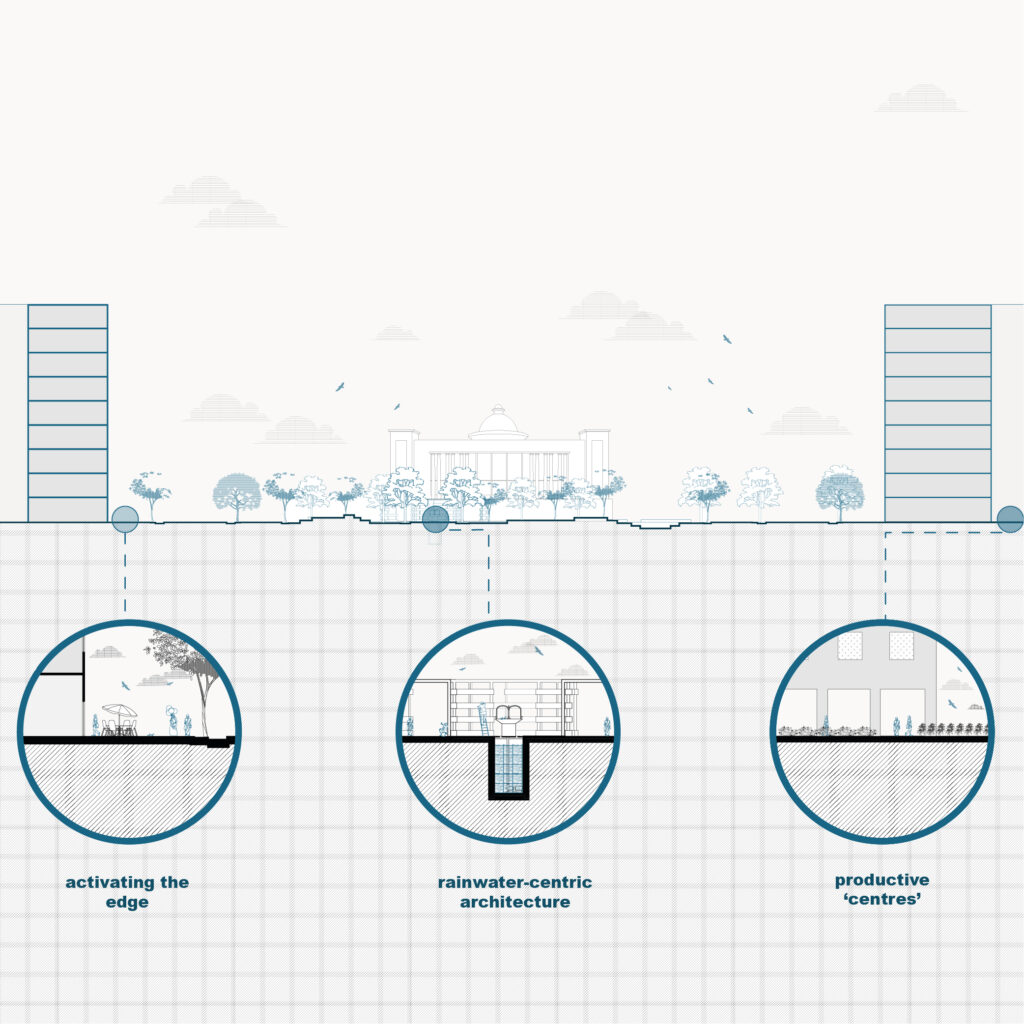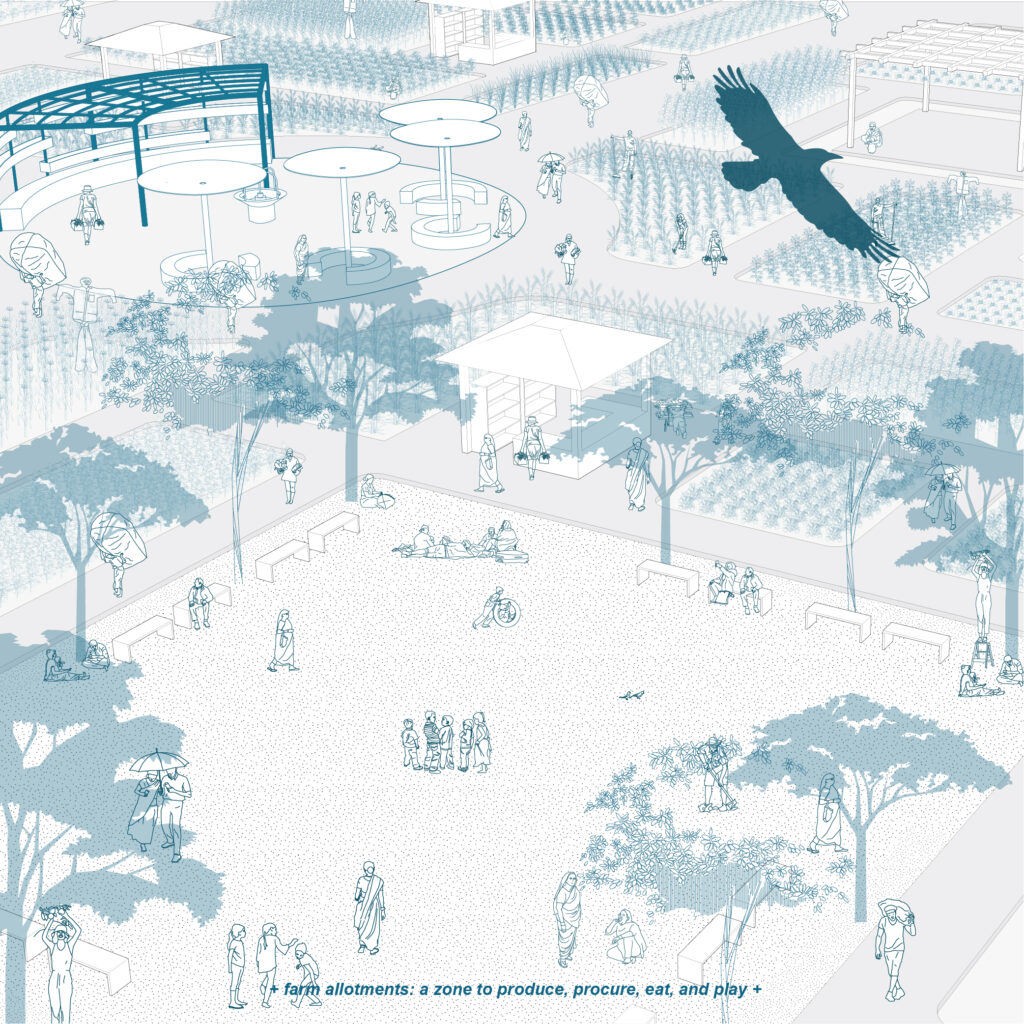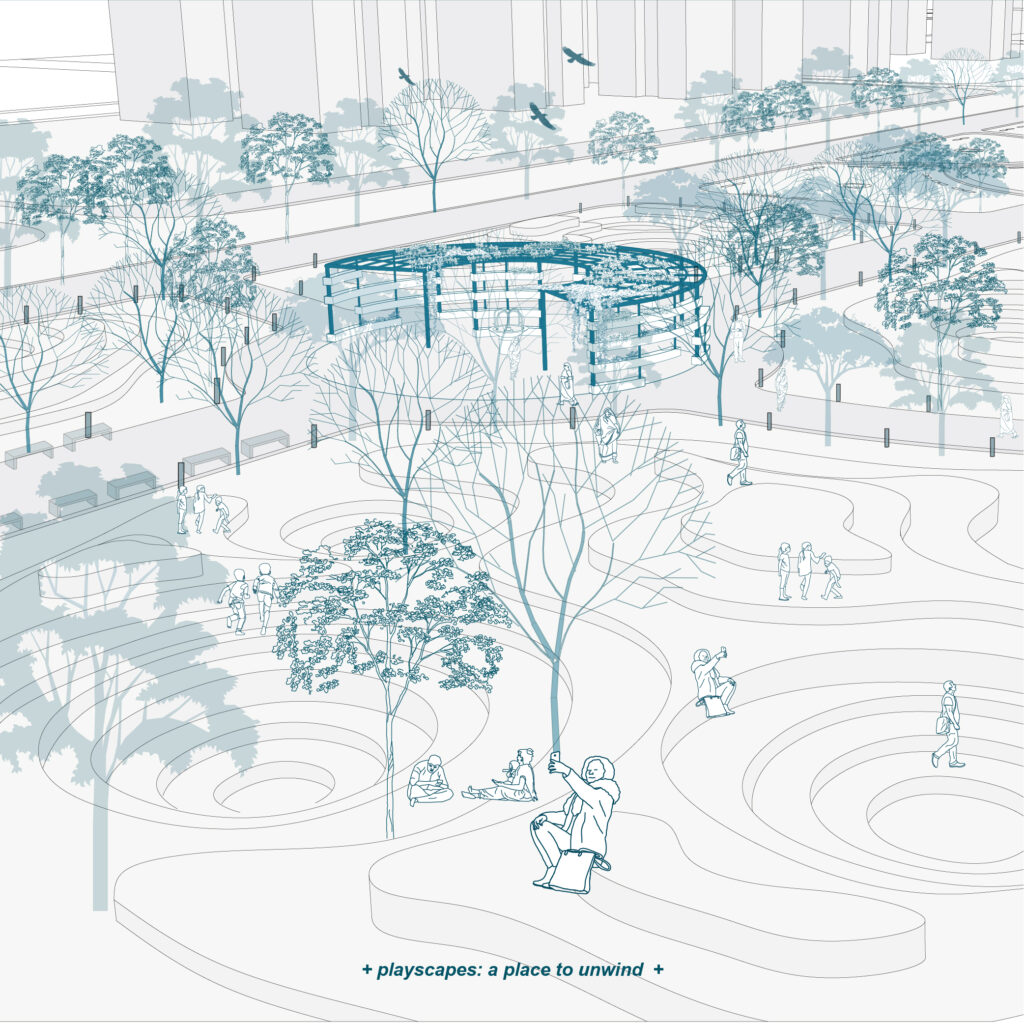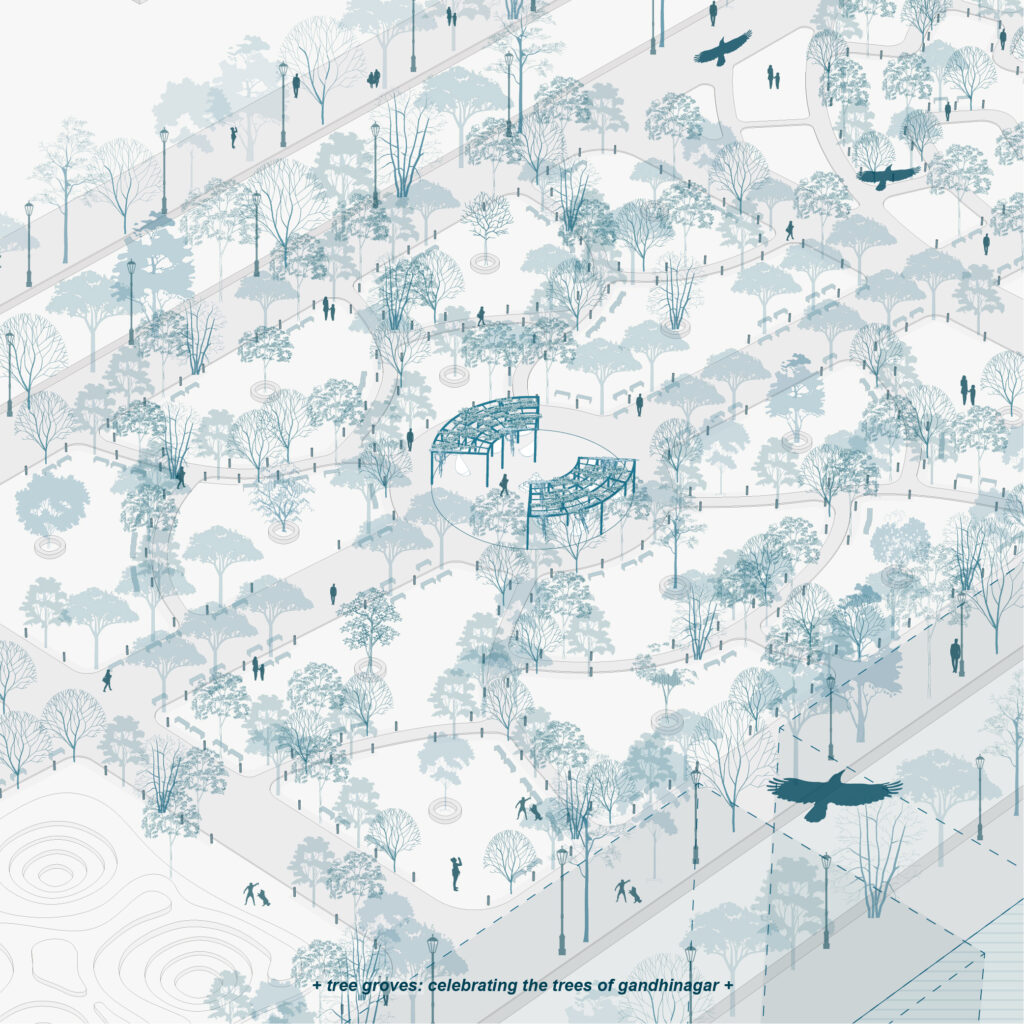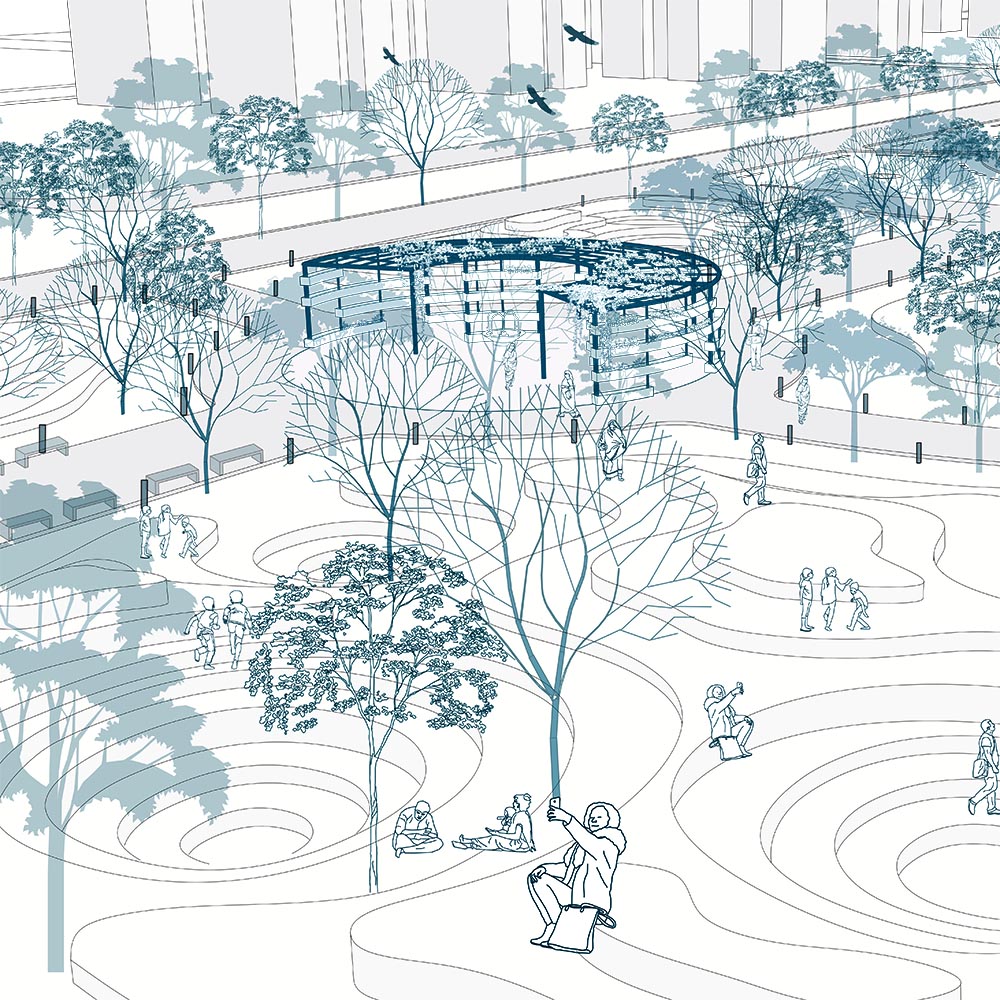
Introduction
Synergetic grounds transforms the fenced and lawned Central Vista into an accessible, productive space for people of Gandhinagar. The Vista is reimagined as the new social hub which seeks to engage people in different productive activities, helping them connect better to the everyday processes of food production, waste management, etc. The project also tries to make the aforementioned systems visible to the public through a series of socially engaging programs. The primary ideas involve breaking the linearity of the existing Vista through multiple access points, by creating five key zones within the vista – the ecological zones, production zones, DIY zones, social zones, and utility oriented zones. All the zones here are further broken down into blocks, each following a unique productive program, related to the zone. These blocks are connected through a continuous, shaded walkpath, punctured by points of pause in the form of social architectures that act as landmarks.
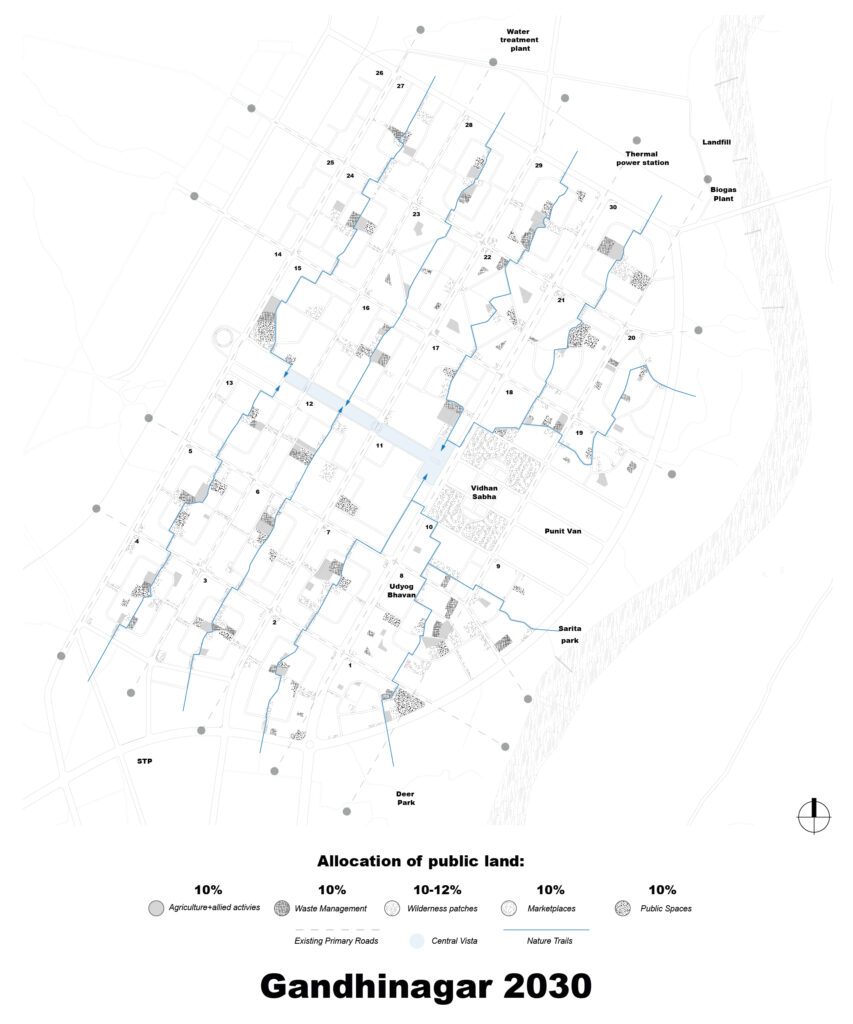

XL Strategy
Today, a pattern observed in cities all over the world is the pushing out of various everyday and/or productive processes, like the treatment of waste, power generation, as well as food production, among many others, to and sometimes beyond the city limits, due to their low scenic value. This creates a situation which can be best captured by the phrase ‘out of sight, out of mind’.
A similar pattern is also observed in the city of Gandhinagar, where processes pertaining to water treatment, power generation, etc, along with major food industries are pushed to the periphery of the city. While this scenario is created in the city on one hand, on the other exists a large availability of vacant lands that could alternatively be utilised to accommodate the aforementioned activities.
The XL strategy for Gandhinagar thus identifies and re-purposes these sector-level vacant lands to incorporate processes of food production, waste management, etc., at the sector level, while also carving out spaces to facilitate soil rebuilding, which thrive undisturbed by human interference. All sector-level productive spaces are connected to each other through nature trails, all of which lead one to the Central Vista
By bringing these systems back into the everyday city life, the XL strategy also aims to bridge the gap between people and the various everyday processes like food consumption, management of waste, etc.
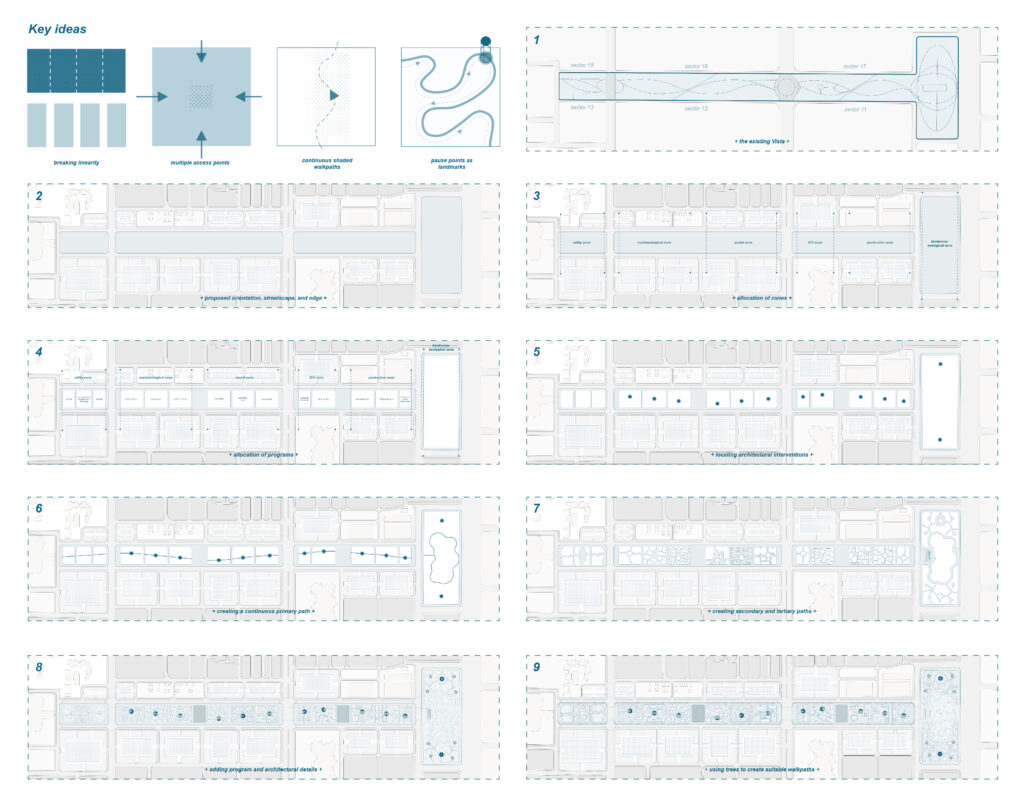
Key Concepts
The key concepts kept in mind while developing the design for the Central Vista are as follows:
- Breaking the existing linearity and monotony of the Vista to create a series of unique experiences
- Removing fences – creating a visually permeable and accessible Vista with multiple access points
- Creating a continuous and shaded walk path using trees providing both shade and visual pleasure
- Pause points as landmarks – creating a sense of where one is located
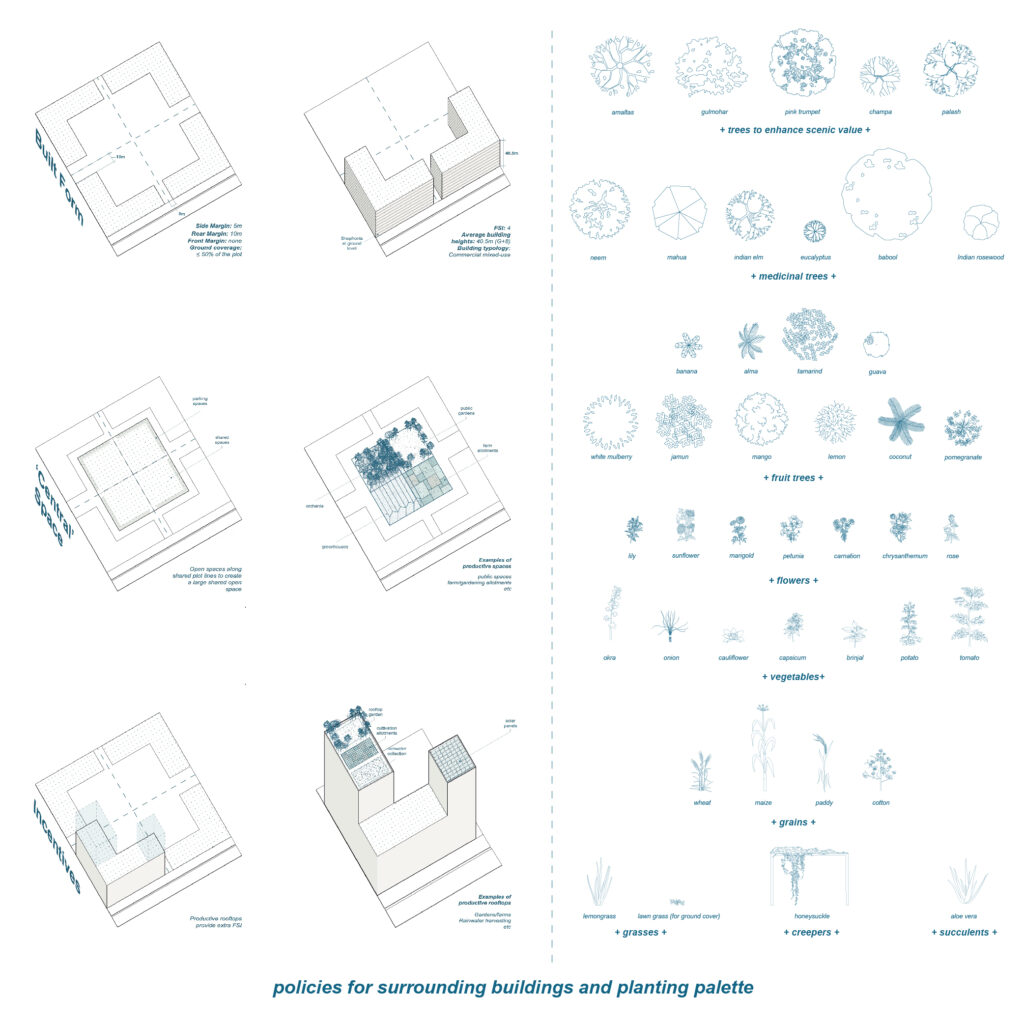
Policies for surrounding buildings
At present, on the edge of the Central Vista exist many vacant plots. The project also proposes the re-purposing of these vacant plots for multiple uses, including productive activities in the open spaces. For this, on average, each vacant plot is divided into 4 or more parts which can accommodate built forms that adhere to the proposed policies.
These policies can be broadly categorised as follows:
1. Policies pertaining to the built form
These policies include the margins, ground coverage, FSI, and the proposed heights and uses of the buildings on the edge.
- Building typology: Commercial mixed-use with restaurants, cafes, and stores on ground level
- Side margin: 5m
- Rear margin: 10m
- Front margin: 0m (Built to line)
- Ground coverage: less than or equal to 50%
- Average building heights: 40.5m
2. Policies pertaining to the ‘central’ open spaces
As mentioned above, plots are primarily divided into 4 or more parts with a proposed ground cover of less than or equal to 50%, leaving a large open space. All buildings may pool in their open spaces to create large, commonly owned productive ‘centres’, wherein grey water treatment plants, agricultural plots, public spaces, etc, can be set up and the benefits of the same can be reaped collectively.
3. Incentives
The practice of productive activities at the building level is promoted through incentives. For example, a building may receive an additional FSI so long as the roof of the same is utilised in productive activities.
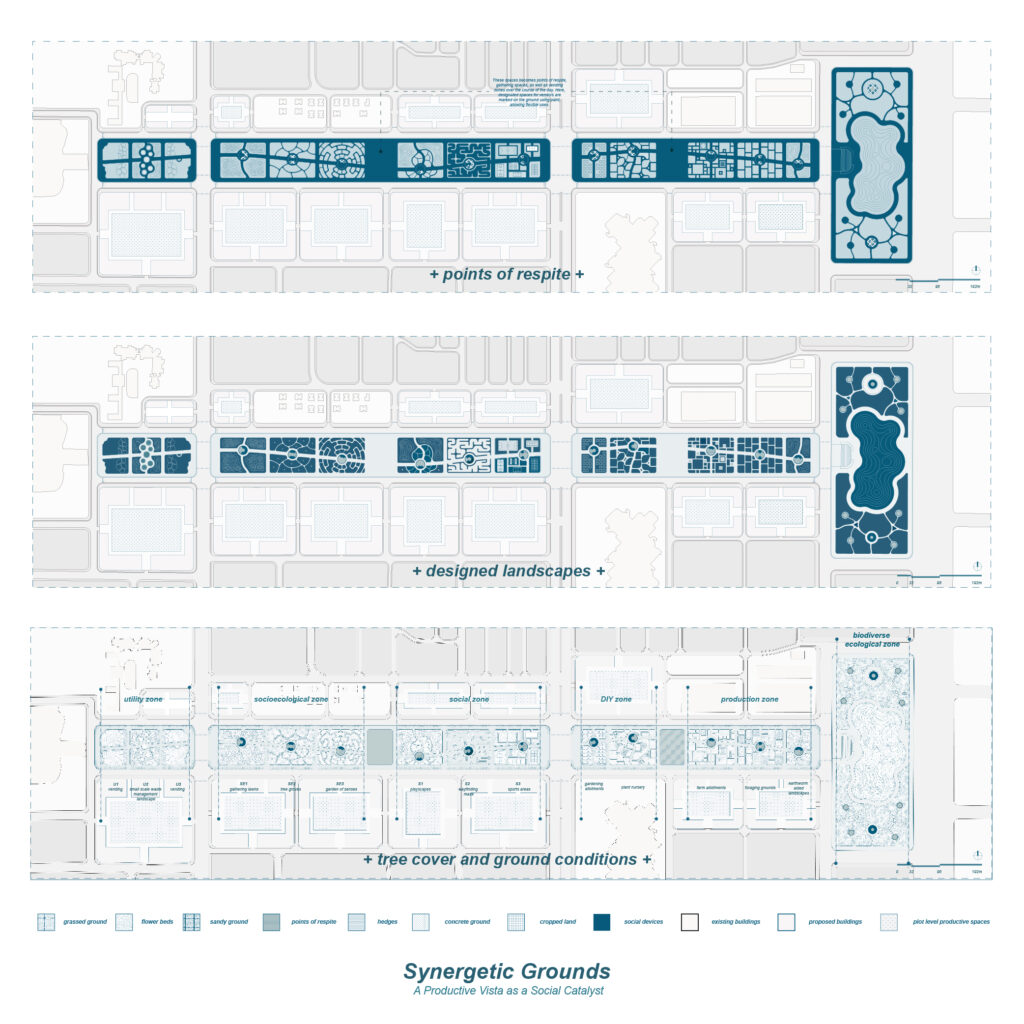
L Scale Strategy
At the L Scale, the project takes a closer look at the central vista, which as present stands as a fenced and lawned space, completely devoid of public use on most days. The Vista is reimagined as the new social hub which through accessible productive spaces, seeks to engage people in different productive activities, helping them connect better to processes of food production, waste management, etc. The project also tries to make the aforementioned systems visible to the public through a series of socially engaging programs. The primary ideas involve breaking the linearity of the existing Vista through multiple access points, by creating five key zones within the vista – the ecological zones, production zones, DIY zones, social zones, and utility oriented zones. All the zones here are further broken down into blocks, each following a unique productive program, related to the zone. These blocks are connected through a continuous, shaded walkpath, punctured by points of pause in the form of social architectures that act as landmarks.
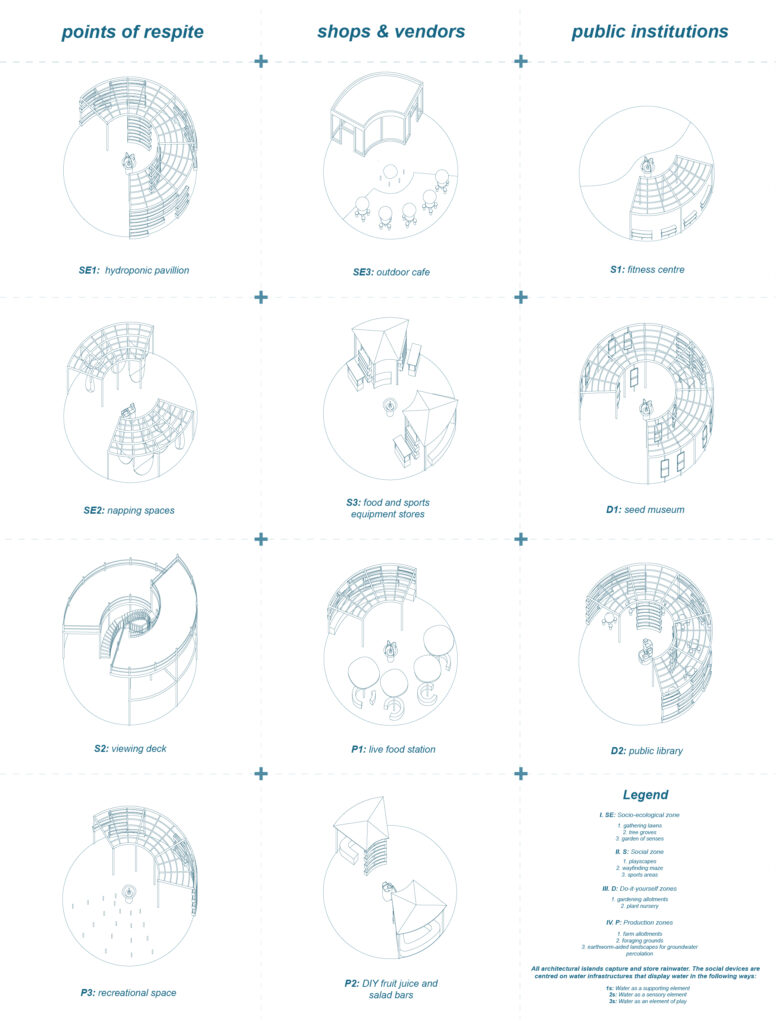
Architectural Interventions
The architectural elements act as engaging social devices that puncture the continuous walk paths at regular intervals. All architectures are rainwater-centric, meaning that they allow the inflow of rainwater into an underground water tank. The collected water is then displayed in a closed loop, in the following forms:
- Water as a supporting element (providing drinking water, hand washing stations, etc)
- Water as a sensory element (water as a visual element in form of fountains, water as a sound element as small-scale waterfalls, etc)
- Water as an element of play (water in the form of play elements like small scale fountains in which one can play, etc)

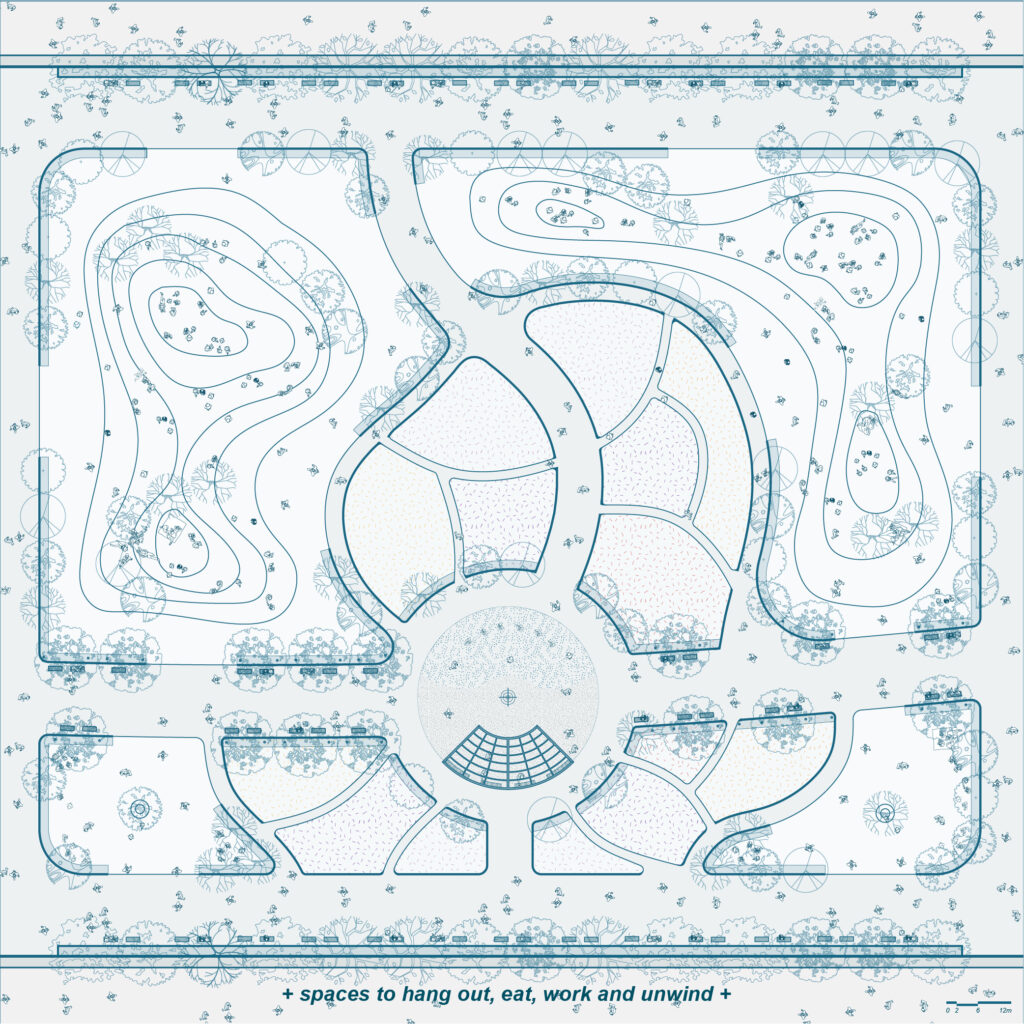
S Scale Plans
The plans at S scale seek to capture the envisioned density of use and the hustle and bustle of the spaces that sets the proposed design apart from the existing Vista. Through a series of unique experiences at the S Scale, the design proposal seeks to cater to a varied set of people, attracting as many people to the Vista as possible, creating a new social hub in the city of Gandhinagar.
